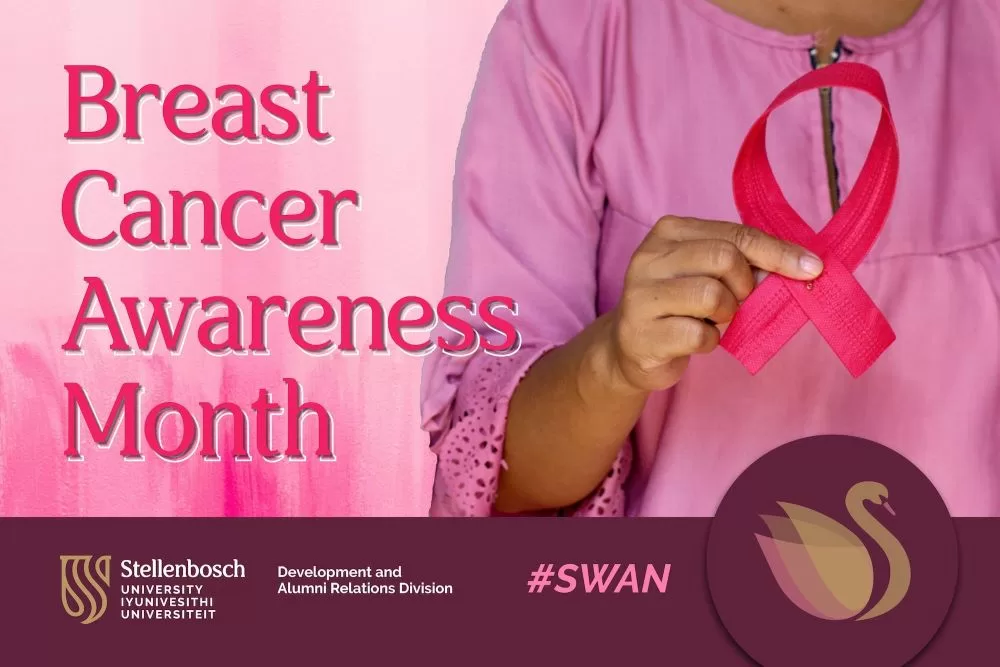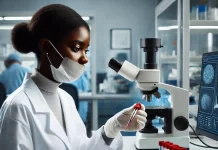BREAST CANCER ON THE RISE IN YOUNGER SOUTH AFRICAN WOMEN
October is Breast Cancer Awareness Month
Breast cancer, the most prevalent cancer among South African women, is increasingly being detected in women under 40. This trend mirrors global patterns, where younger women are being diagnosed with more aggressive forms of the disease, underscoring the need for early detection and awareness.

A recent study in the United States found that breast cancer is the leading cause of cancer death among women aged 20 to 49 years in the United States. Similarly, a South African study reported that the average age of breast cancer diagnosis for women under 40 was 34 years. Across all ages, breast cancer affects 1 in 27 women in South Africa, accounting for 23% of all cancers diagnosed.
The Breast Imaging Society of South Africa (BISSA), a sub-specialty group of the Radiological Society of South Africa, warns that young women are more likely to develop breast cancers with aggressive biological characteristics. These cancers often present with larger tumours and more advanced stages of the disease at diagnosis, making early detection vital for improving outcomes.
Dr Peter Schoub, Chair of BISSA, emphasises the importance of early detection through regular self-examinations starting in a woman’s 20s, and annual mammograms from age 40.
“Awareness and education about breast cancer in young women can lead to earlier diagnoses and less invasive treatment options. The growing number of younger women being diagnosed with breast cancer highlights the need to expand awareness campaigns and improve screening programs, especially for those at higher risk,” says Dr Schoub.
One of the biggest hurdles in South Africa remains the late-stage diagnosis of breast cancer, which severely limits treatment options and reduces survival rates. Late diagnoses are often attributed to a combination of factors, including a lack of awareness, socioeconomic disparities, and limited access to healthcare facilities.
“Although most major medical schemes offer complimentary mammogram screenings for women over 40, only about 20% of women take advantage of this service,” says Dr Schoub. “We must also be mindful that breast cancer is increasingly being detected in women in their 30s, who experience more aggressive forms of the disease that can spread rapidly if not detected early.”
Dr Schoub says that while breast cancer risk increases with age, the disease does not discriminate—women of all ages, races, and socioeconomic backgrounds can be affected.
“This is why routine self-examinations and clinical breast checks by a healthcare professional at least once a year are essential. Any abnormality, regardless of age or family history, should be evaluated by a medical professional immediately.”
He says the goal of breast cancer screening is to detect the disease before symptoms emerge. “Cancers found through routine screening are often smaller and localised, increasing the chances of successful treatment and survival. The size of the tumour and whether the cancer has spread are key factors in determining the prognosis.”
Who is at risk of developing breast cancer?
Although every woman is potentially at risk of getting breast cancer, certain factors increase the likelihood:
Age: The risk of developing breast cancer increases as one gets older, however 1 out of 8 invasive breast cancers are found in women younger than 45.
Family history: Women with close blood relatives who’ve had breast cancer are at higher risk.
Personal history: A woman with cancer in one breast has a 3-4 times increased risk of developing a new cancer in the other breast or in another part of the same breast.
Dense breast tissue: Women with dense breast tissue (as identified on a mammogram) have more glandular tissue and less fatty tissue and thus a higher risk of breast cancer.
Overweight or obese women: Research in the past has shown that being overweight or obese increases the risk of breast and other cancers.
Lifestyle: Excessive alcohol consumption, lack of physical activity, smoking, and diets high in saturated fats contribute to risk.
Hormonal factors: Women who have not had a full-term pregnancy or have their first child after age 30 have a higher risk of breast cancer compared to women who gave birth before age 30. Breastfeeding can lower breast cancer risk, especially if a woman breastfeeds for longer than one year. Women who started menstruating younger than age 12 have a higher risk of breast cancer later in life. The same is true for women who go through menopause when they are older than 55. Current or recent past users of hormone replacement therapy (HRT) have a higher risk of being diagnosed with breast cancer.
How to self-examine your breasts
The breast changes throughout the menstrual cycle and it is important to always self-examine at the same time of the month, usually a week after your period when your breasts are less tender due to fluctuations in hormone levels.
Visual examination – sit or stand, without clothing, in front of a mirror with your arms to your side and look for changes in size, shape, symmetry, puckering and dimpling.
Physical examination – lying down so that your breast tissue spreads out making it easier to feel, or in the shower using soap to glide more easily over your breasts:
Use the pads of your three middle fingers, not your fingertips, to examine.
Apply different pressure levels – light to feel the breast tissue closest to the skin, medium to feel deeper, and firm to feel the tissue closest to the chest and ribs.
Use a methodical technique such as beginning near the collarbone, then moving towards the nipples, in a clockwork fashion.
Allow enough time and don’t rush the examination.
Signs to look out for
It’s important to note that many lumps may turn out to be harmless, but it is essential that all of them are checked. Visit your healthcare provider if you notice any of these changes:
swelling of all or part of the breast,
skin irritation, dimpling or ridges on the skin,
nipple pain or the nipple turning inward,
redness, scaliness or thickening of the nipple or breast skin,
a nipple discharges other than breast milk, or
a lump or knot near the underarm area.





























